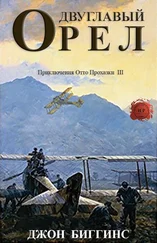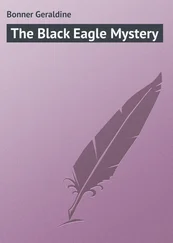We ate a hurried breakfast of coffee and bread, then walked out across the flying field to where our two aeroplanes, their pilots (Toth and a Czech corporal called Jahudka) and their respective ground crews were waiting in the pale, faint-shadowed light of an early summer’s morning, long before the sun’s rays had begun to stream over the mountain pinnacles that loomed above Haidenschaft to the north and east. In the distance the rumbling of artillery was growing louder by the minute as the daily round began in the Isonzo trench lines. It had been decided the previous evening, following intelligence reports of a new Italian single-seater squadron near Udine, that instead of proceeding alone on our mission we would fly with Schraffl’s aeroplane about five hundred metres above us as an escort.
Our own aeroplane, number 26.74, named Zoska — “Little Sophie” in Polish—was a Hansa-Brandenburg CI built under licence by the Phonix company at Stadtlau. This was a matter of some comfort to me on my maiden combat-flight, since the “Gross Brandenburger” was generally reckoned to be the best of the Austro-Hungarian two-seaters. Able to perform most front-flying tasks at least competently, it was easy to fly, immensely strong, stable enough to make a good reconnaissance aircraft yet sufficiently fast and manoeuvrable to give it at least some chance of survival if attacked by a single-seat fighter. One of the better products of that brilliant if patchy designer Ernst Heinkel, we owed the Brandenburger— like so much else in the Imperial and Royal armed forces—to a succession of administrative accidents and half-decisions; but also to the foresight and imagination of the Trieste-Jewish financier and aviation enthusiast Camille Castiglione who, when war broke out in 1914, had solved the Dual Monarchy’s aircraft industry problem—that is to say, the almost total lack of one—at a stroke by simply buying up a complete factory in Germany along with its chief designer. The Hansa-Brandenburg plant near Berlin produced the designs and the prototypes, and these were then licensed out to be built by Austro-Hungarian factories. It was far from being an ideal system: the k.u.k. Fliegertruppe tended to get only those designs that Herr Heinkel had been unable to sell to the German Air Force. But it was better than nothing, and in the Hansa-Brandenburg CI it gave us a reconnaissance two-seater which served us faithfully right up to the end of the war, fitted with ever more powerful engines. In fact I recall that the Czechoslovak Air Force was still flying a few of them in the early 1930s.
The machine that stood before us in the half-light that morning at Caprovizza was a sturdy-looking, squarish, rather uncompromising biplane with curious inward-sloping struts between the wings. Its 160hp Austro-Daimler engine and attendant radiator completely blocked the pilot’s view forward, so that Toth had to crane his neck out and look along one side of the nose like an engine driver peering out of his cab. The two of us were to sit in a long, shared cockpit. For defence to rearward I had a stripped-down Schwarzlose machine gun mounted to slide on rails around the cockpit edge, while for attack—that is to say, something getting in front of us for long enough to be worth a shot—Toth had a second Schwarzlose, complete with water-jacket this time, mounted on a pylon above the top wing so that it could fire ahead over the radiator and propeller. Looking at it that morning I was not at all sure that this second machine gun was worth the trouble of lugging it along with us. Thanks to the lack of forward view for the pilot, the sights consisted merely of a brass eyelet and a pin fixed into the interplane struts while the firing mechanism—since the weapon was way above the pilot’s reach—was a lavatory chain and handle.
As for the photography which was our business that morning, I foresaw little problem. The previous afternoon I had received such instruction as was considered necessary for an officer-observer to be able to work an aerial-reconnaissance camera, and really there was nothing to it. A warrant officer from the army photographic laboratory at Haidenschaft had bicycled over to Caprovizza to tutor me in the principles of air photography and, when he learnt that I had been a keen amateur photographer from about the age of ten, had kindly agreed to omit the introductory parts of his lecture (properties of light rays, refraction through lenses, chemistry of the photographic plate, etc.) and just show me how to work the thing: so simple, he assured me, that even cavalry officers had been known to master it. The camera was about a metre high and was fixed to look downwards through a little sliding trapdoor in the belly of the aeroplane just behind the observer’s position. It had a magazine of thirty photographic plates, and all that I had to do was to wait until we were flying level over the target, at the prescribed height and a steady speed, then keep pulling a lever until all the plates were used up. The lever would operate the shutter and then, on the return stroke, allow the exposed plate to drop into a collecting-box while loading a fresh one.
It looked like being a simple enough operation. Our orders were to be over Palmanova at 0630 precisely and then to fly northwards along the Udine railway line at exactly three thousand metres and a hundred kilometres per hour, taking photographs at precise five-second intervals. The reason for all this precision (I learnt) was that the Italians were stacking artillery shells alongside the railway line in preparation for the great Isonzo offensive that was expected any day now. The intelligence officers at 5th Army Headquarters were keen to know exactly how much ammunition the Italians were accumulating, which might give them some indication as to which side of Gorz the blow would fall. We were to photograph the ammunition dumps at a precise time and height so that, by taking the altitude of the sun at that moment and measuring the length of the shadows cast, it would be possible to work out exactly how high the stacks were. To my mind this seemed a rather futile exercise: if you have ever been on the receiving end of an artillery bombardment (as I have several times and devoutly hope that you may never be) then it is largely of academic interest whether the enemy has a thousand shells to lob at you or only 973. But there we are: Old Austria was much addicted to such meaningless precision; and anyway, orders are there to be obeyed no matter how inane they may appear.
Hauptmann Kraliczek’s remarks notwithstanding, I used the services of our young Burgenlander mechanic to hold a brief conference with Toth, pointing out the proposed route on the map and signalling by dumb-show what we were to do. He grunted and nodded his head and appeared to signal his agreement, so we clambered aboard and made our pre-flight checks: guns, camera, compass, altimeter and the rest of the rudimentary equipment considered necessary for fliers in those days. As we finished the first rays of the sun were reaching over the bare limestone peaks of the Selva di Ternova. Up there the shepherds would soon be piping to gather their flocks as they had done every summer’s morning for the past four millennia, still living a life that would be entirely familiar to their counterparts in Ancient Greece. Yet here we were, only a few kilometres away in the valley, about to take off on an adventure at the very forefront of the twentieth century, doing something which even in my not so distant youth had been completely unthinkable: the very crime for which the gods had punished Icarus. It was all extremely dangerous; but I have to say that at the same time it was marvellously exciting.
The checks completed, I turned to wave to Schraffl in the other Brandenburger. He waved back, and I slapped Toth on the shoulder to signal him to get ready. Given our problems with language, it was at least some comfort that speech would soon be entirely redundant; since, once we were up in the air, we would be able to communicate only by hand signals or at best by notes scrawled on signal pads. Toth nodded, and I leant out of the cockpit to call to Feldwebel Prokesch and the two mechanics waiting by the aeroplane’s nose.
Читать дальше












